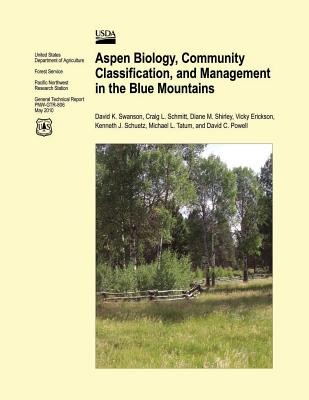
- We will send in 10–14 business days.
- Author: United States Department of Agriculture
- Publisher: CreateSpace Independent Publishing Platform
- Year: 2015
- Pages: 128
- ISBN-10: 1506120164
- ISBN-13: 9781506120164
- Format: 21.6 x 28 x 0.7 cm, softcover
- Language: English
- SAVE -10% with code: EXTRA
Aspen Biology, Community Classification, and Management in the Blue Mountains (e-book) (used book) | bookbook.eu
Reviews
Description
Stands of quaking aspen (Populus tremuloides Michx.) are an uncommon and unique habitat type in the Blue Mountains (fig. 1). As one of very few broadleaf deciduous trees in a region dominated by conifers and semidesert grassland and scrub, aspen brings important diversity to the landscape. Aspen's palatable twigs and foliage, and tendency to develop cavities, make it valuable habitat for wildlife such as deer (Odocoileus sp.), elk (Cervus elephas), woodpeckers, and songbirds. Aspen often grow in riparian areas, providing shade, streambank stability, and nutrients from leaf-fall to streams.
EXTRA 10 % discount with code: EXTRA
The promotion ends in 18d.05:09:05
The discount code is valid when purchasing from 10 €. Discounts do not stack.
- Author: United States Department of Agriculture
- Publisher: CreateSpace Independent Publishing Platform
- Year: 2015
- Pages: 128
- ISBN-10: 1506120164
- ISBN-13: 9781506120164
- Format: 21.6 x 28 x 0.7 cm, softcover
- Language: English English
Stands of quaking aspen (Populus tremuloides Michx.) are an uncommon and unique habitat type in the Blue Mountains (fig. 1). As one of very few broadleaf deciduous trees in a region dominated by conifers and semidesert grassland and scrub, aspen brings important diversity to the landscape. Aspen's palatable twigs and foliage, and tendency to develop cavities, make it valuable habitat for wildlife such as deer (Odocoileus sp.), elk (Cervus elephas), woodpeckers, and songbirds. Aspen often grow in riparian areas, providing shade, streambank stability, and nutrients from leaf-fall to streams.


Reviews